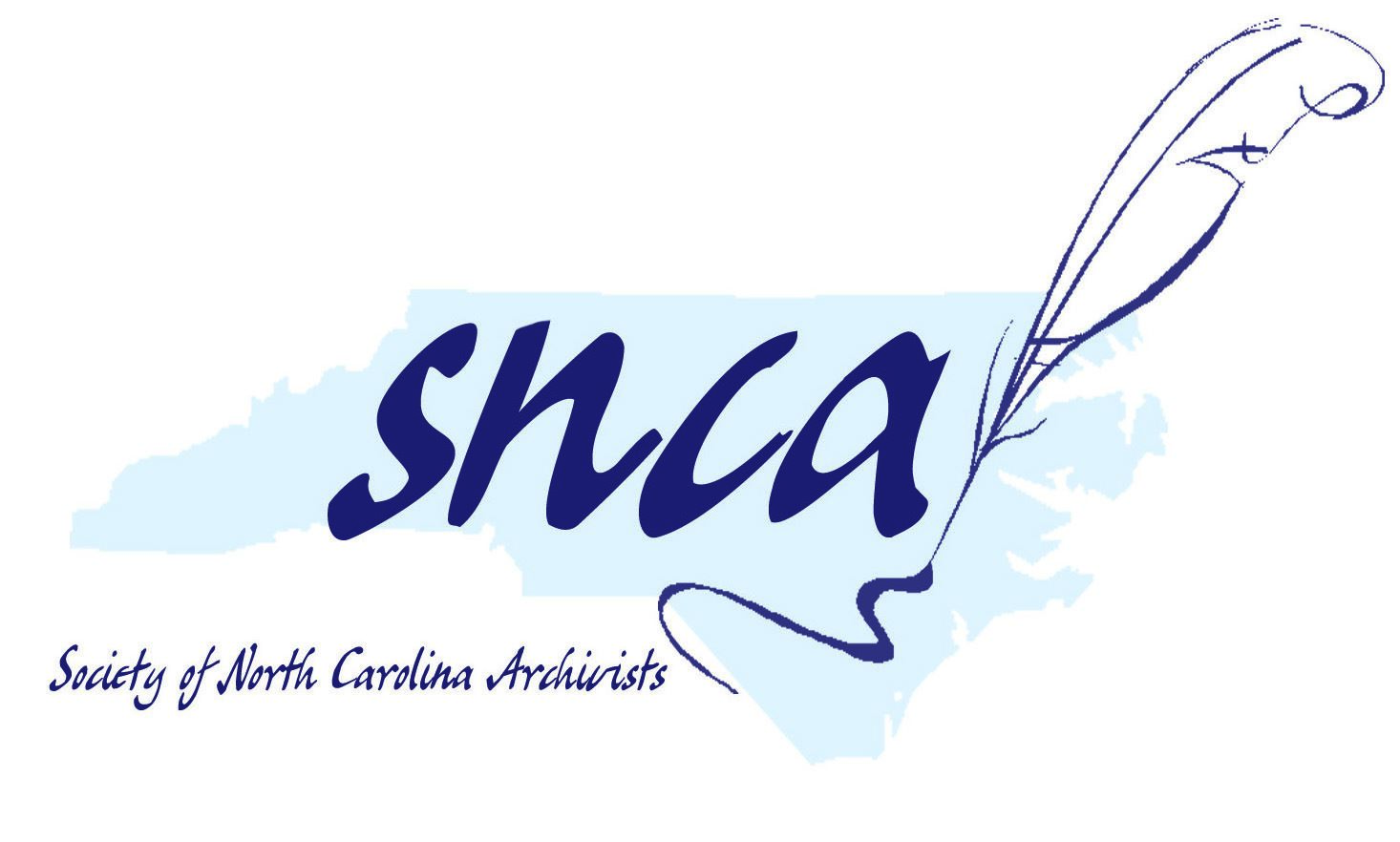This is the second in a series of Archives Month posts around this year's theme, North Carolina Travel, Tourism, and Vacation. It was written by Stephen Fletcher, Photographic Archivist in the North Carolina Collection at the University of North Carolina at Chapel Hill.
In their heyday, picture post cards were everywhere. In our 2020s world, it may be difficult to grasp the ubiquity of the picture post card for those who lived a century before us. Perhaps the closest comparison to today would be the photographs we send via text messaging with our “smart phones,” the key difference being the immediacy of texting. We no longer need to go to a store, buy post cards, write individual messages, look in our address book and write on each card the mailing details for each recipient, find a post office, buy, lick, and adhere postage stamps, and then, finally, drop them in a mailbox. We simply make and send photographs to people in our contacts list stored on our personal devices. Indeed, we can even send the same image and words to several people at once. Nor do we typically need to wait days for a response, receiving replies often seconds after sending. But while we gained immediacy, we lost the joy in searching for and selecting the right post card for the right person, the tangibility of holding the physical object, the anticipation of what post card someone might pick just for us, and all the social constructs surrounding a once massive industry.
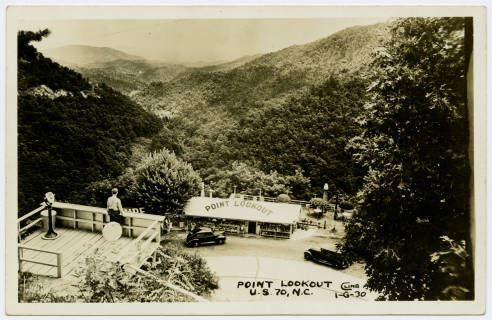
A “real photo” bird's-eye view of a lookout onto a valley, showing a pedestrian, a telescope, a gift shop, and several umbrella-covered tables and chairs. Today, this portion of the former highway is part of the Point Lookout Trail, a 3.6-mile paved bike greenway in the Asheville area through the Pisgah National Forest. Published by W. M. Cline Co., Chattanooga, Tennessee. https://dc.lib.unc.edu/cdm/ref/collection/nc_post/id/3123
During the late 1890s, a picture post card craze rampaged throughout Europe. People collectively mailed multiple millions of them annually. In August 1897, the Times Democrat of New Orleans wrote a brief article about their being “greatly in vogue in transatlantic countries,” noting, “There is an attention in such a little gift that is obvious: there is always interest and instruction given, and it bears a pleasant thought from the traveler pushing from point to point which the local swelterer appreciates.”
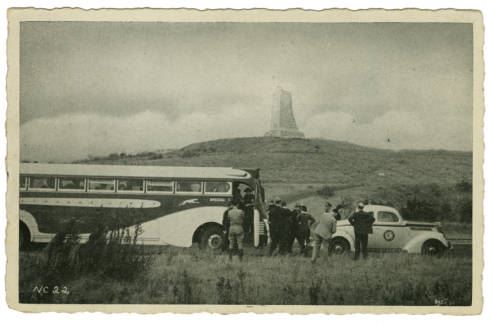
“North Carolina Variety Vacation Land Kill Devil Hill—Lofty Wright Memorial Beacon crowns Kill Devil Hill in Dare County, N.C., where the Wright Brothers first flew their pioneering airplane. U.S. 17 and N.C. 34.” https://dc.lib.unc.edu/cdm/ref/collection/nc_post/id/3790
Several years passed, however, before the popularity of picture post cards reached America. By 1910, the post card fad had taken hold—so much so that the syndicated newspaper column “Little Fables of the Rising Young Man,” under the headline “A Few Vacation Don’ts,” felt compelled to advise readers: “Don’t take fiendish delight in deluging the Chaps in the office with picture post cards of tossing billows, rippling lakes or cool, rugged mountains. They’re hot enough as it is and it only makes them sorer on you. Instead write that you’re surprised to read in the papers what cool weather they’re having since you left. Etc. etc.” So, just as an email and texting etiquette emerged with the adaption of new technologies, so too, did that of burgeoning post card authors.
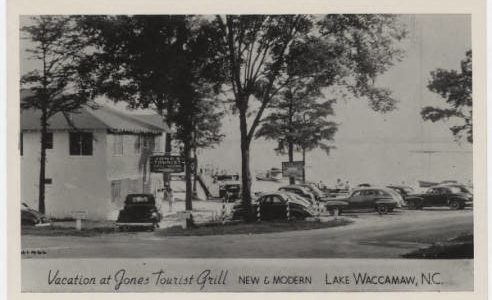
This post card caters to the traveler and serves as an advertisement for its issuer. Many post cards of this type have become categorized by today’s collectors as “boring postcards.” https://dc.lib.unc.edu/cdm/ref/collection/nc_post/id/4725
Picture post cards fulfilled many niches beyond personal travel correspondence, including advertising, specialized collecting, and daily mundane messaging. Their hallmark, however, was that postmark on cards sent and received from nearby and faraway locations. In 1914, the noted columnist and world traveler Frederic J. Haskin wrote a feature on picture post cards. “The post card industry has grown into immense proportions,” he noted. “It has throttled the cold reason of about half the human race, has insinuated its hold upon every country of the world, made immortality cheap, and robbed social correspondence of every sting.” He added, “There is not a land so lost to hope, not a hamlet or village so remote, as to be without these products.”
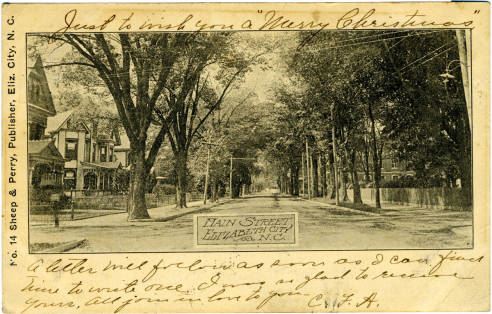
![]()
“Main Street, Elizabeth City, N.C.” https://dc.lib.unc.edu/cdm/ref/collection/nc_post/id/385
The University of North Carolina at Chapel Hill's digital library North Carolina Postcards is a trove of “these products”—including travel, tourism, and vacation imagery and messages. It comprises more than 10,500 scans made from two collections in the North Carolina Collection Photographic Archives: the North Carolina Postcard Collection and the Durwood Barbour Collection of North Carolina Postcards. The former is an amalgamation of picture post cards acquired from innumerable sources over numerous decades; the latter, a mindful curation of a single post card collector. The digital library contains a scan of at least one post card for each of North Carolina's one hundred counties. Famous homes, historic sites, state parks, scenic drives, lighthouses, and resorts, are among the topics represented. Fishing, swimming, boating, and air travel are among the activities depicted. In fact, there are predetermined searches for more than 1,400 subjects and 750 North Carolina locations that can be initiated by a simple computer mouse click. Keyword and advanced searches can be conducted through several metadata fields including descriptions. Many cards have messages that have been transcribed when notable. The image types are both those made on a printing press and “Real Photo” post cards made in a darkroom on photographic paper with a preprinted back designed for the address and message. The result? The immediacy and speed of the computer enables you to revisit twentieth century North Carolina at a pace of your choosing.
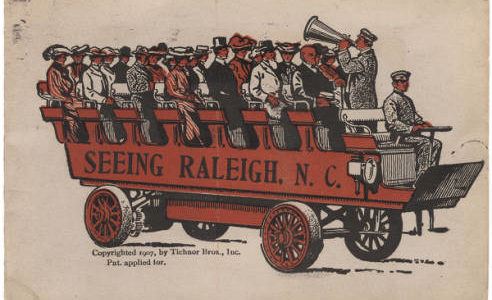
This view of tourists on a bus depicts a man holding a megaphone speaking to the passengers. The card opens to show a man and woman driving a car, and a fold-out strip of miniature postcard views of Raleigh. This Tichnor Brothers postcard, copyrighted in 1907, uses a general design for which the name of any city could printed along the side of the bus, and to which miniature views could be adhered. https://dc.lib.unc.edu/cdm/ref/collection/nc_post/id/5066
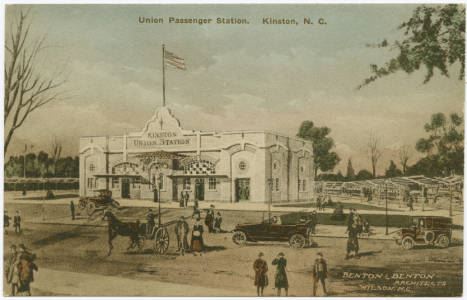
A careful eye will notice that the figures and vehicles are artistic renditions. It was not uncommon to update the people with contemporary clothing and replace the automobiles with the latest models, while retaining the same architectural view. https://dc.lib.unc.edu/cdm/ref/collection/nc_post/id/5624
